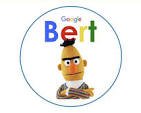
BERT (Bidirectional Encoder Representations from Transformers) is a machine learning model developed by Google to improve natural language processing (NLP). BERT is used to help Google understand the meaning and context of words in a sequence, which helps improve search results.
How BERT works
BERT learns to predict text that comes before and after other text
BERT considers both left-to-right and right-to-left contexts
BERT understands how words relate to each other, even small words
BERT takes the whole sentence into account, including prepositions
What BERT is used for
Search results: BERT helps Google rank and retrieve relevant documents for search queries
Sentiment analysis: BERT can perform sentiment analysis
Customer feedback: BERT can help understand customer feedback
Examples of BERT in action
“Can you get medicine for someone pharmacy”: BERT understands that the user is asking about getting medicine for someone else, not just filling a prescription
“My name is Gopal and I live in New Delhi”:
BERT can predict the country where New Delhi is located
“The man worked as a [MASK]”: BERT can predict job roles that are relevant to a man
BERT is the basis for other models, including RoBERTa, ALBERT, and DistilBERT.


0 Comments